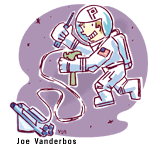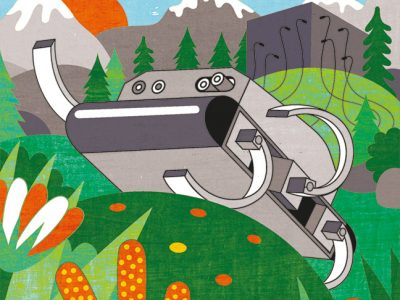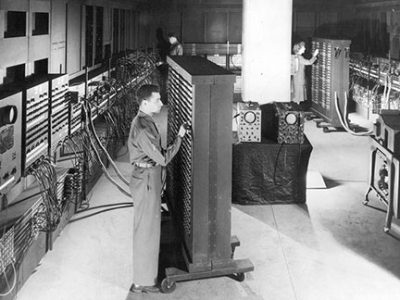
It was 5 A.M., and most of Garrett Reisman’s classmates were still sleeping. But the mechanical engineering student was wide awake, having crept to the top of one High Rise to glimpse the Space Shuttle flying overhead. “I have very vivid memories of that — and now,” says an enthused Dr. Reisman, EAS/W’91, nearly a decade later, “I get to see the view from the other side.” He was selected from 2,600 applicants to be one of the 25 members of the astronaut class of 1998 — the first Penn undergraduate alumnus to earn this distinction. (Dr. Michael L. Gernhardt, GEng’83, Gr’91, is the only other Penn graduate to become an astronaut in the program’s history.)
Last month, Reisman began what will be at least a year of intensive academic and physical training and evaluation at the Johnson Space Center in Houston. Between hitting the books and learning about the systems on the Space Shuttle and Space Station, “there’s a lot of fun stuff,” notes Reisman, “like learning to fly all the T-38 fighter jets and going up in a modified Boeing 747 [nicknamed ‘the vomit comet’], which basically goes into a nose-dive to simulate weightlessness.” Once he successfully completes training, he will receive a technical assignment within the Astronaut Office and then wait to be assigned to a crew.
“It’s been my dream since childhood,” he says. “I was always interested in space flight; I built model rockets and I watched movies of the Apollo flights. But I first got serious about it at Penn.” Reisman credits three mentors for their help in reaching his goal: Dr. Gregory Farrington, the former dean of the School of Engineering and Applied Science; Dr. Joseph Bordogna, the Alfred Fitler Moore professor and dean emeritus of the Engineering School; and Dr. William Hamilton, director of the Management and Technology program.
After earning dual bachelor’s degrees in economics and mechanical engineering from Wharton and the Engineering School, Reisman went on to earn his master’s degree and doctorate in mechanical engineering from the California Institute of Technology. He worked for the past year and a half as a spacecraft guidance, navigation, and control engineer at TRW’s Space and Electronics Group in Redondo Beach, Calif.
Reisman believes his Penn experiences helped him stand out as a finalist for the astronaut program. He told his interviewers about participating on the first mechanical engineering team at Penn to build a solar car for an intercollegiate competition. “There are a lot of hands-on, quick fixes you have to come up with to keep the car running. It’s not dissimilar to the things they had to do to keep the Mir running in space.”




